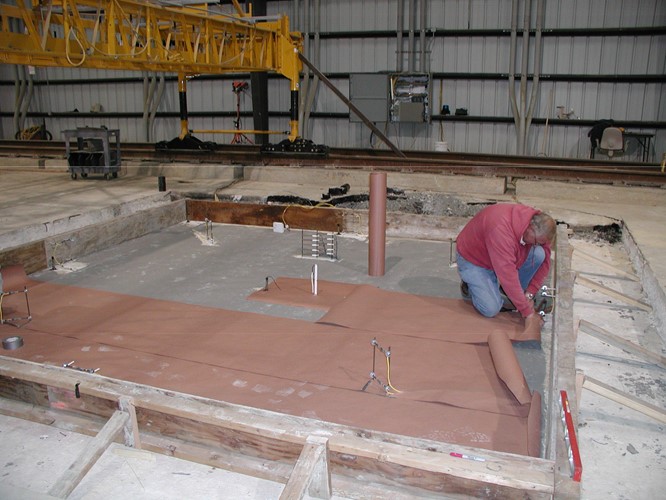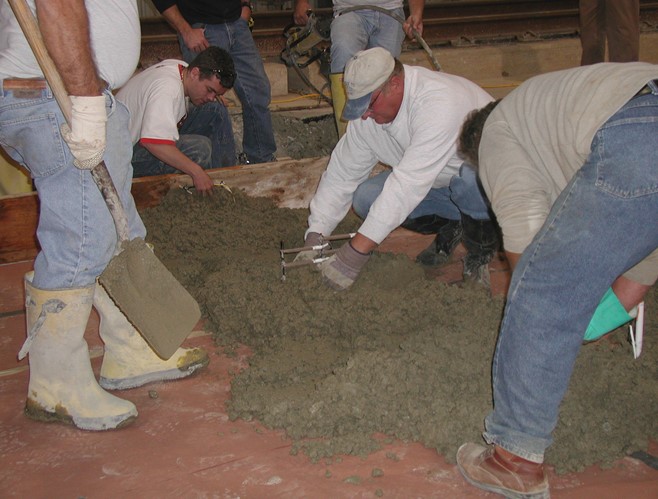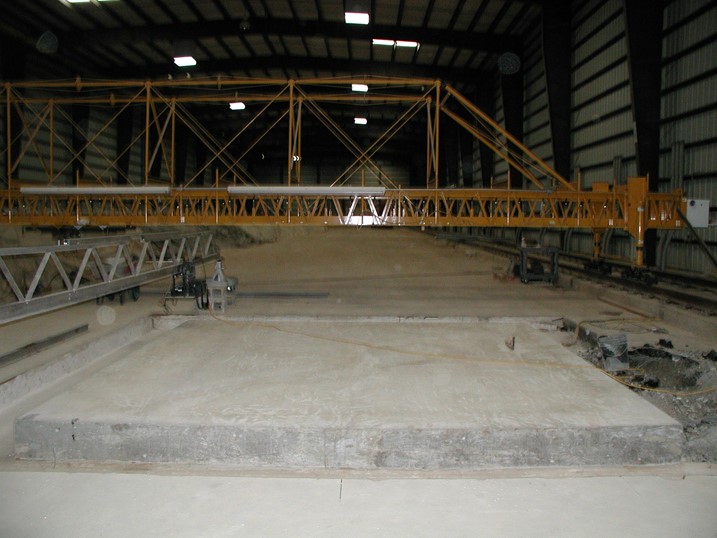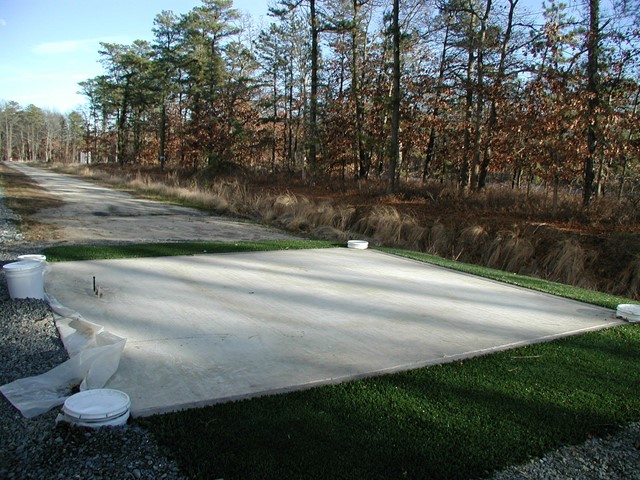CC2 Twin Slab Pavement Construction/Cross Section
Two identical concrete slabs were placed at the NAPTF on October 13, 2004. One slab was placed inside the NAPTF building and the other outside the building near the south wall. Both slabs were 15 ft. by 15 ft. by 11 in. thick, the same as the CC-2 single slab placed on June 2, 2003. Similar construction procedures, instrumentation, and monitoring techniques were applied. The twin slabs and the single slab had concrete mixes comparable to that of the CC2 test items except that the twin slabs had no fly ash in the cementitious mix.
The indoor slab was placed on a 20 ft. by 20 ft. exposed area of an existing 6 in. thick econocrete stabilized base remaining from CC-1 (HRS, station 667 to 682, south side, where the station number is the distance from the origin in feet). Figure 1 shows the instrumentation for the new inside slab. Construction paper is being set in place serving as the bond breaker between the slab and the base. Figure 2 shows the concrete placement. Attention focused on hand packing the concrete around the instruments.
The top of the outdoor slab was located at the level of the soil grade on the south side of the NAPTF building, station 642 to 657. It was supported on a 20 ft. by 20 ft. by 18 in. thick econocrete stabilized base.
The base was placed on September 2, 2004. The 18 in. thickness of the base material was selected in order to minimize movements. The twin slabs were wet-cured for 68 days using burlap strips, timed soaker hoses, and plastic sheet coverings. Curling of the slabs was minimal during the wet curing period. All equipment and coverings were then removed, and the slabs were allowed to dry starting on December 20, 2004. The behavior of the slabs was observed for daily, seasonal, and annual variations.

FIGURE 1. Instrumentation and Bond Breaker for Inside Slab.
The twin slabs were placed on an econocrete stabilized base which rested on a granular subbase supported by high strength subgrade. These conditions existed within the NAPTF, but had to be duplicated outside. A temporary canopy had to be erected in order to protect the construction of the outside slab from inclement weather. Wet curing procedures were similar to those used for the original inside slab. Curing lasted for 68 days. The slabs were allowed to dry starting on December 20, 2004. Figures 3 and 4 show the cured slabs in place.

FIGURE 2. Concrete Placement for Inside Slab.
>

FIGURE 3. Inside Slab (Mobile Bridge in Background).

FIGURE 4. Outside Slab.
Rewetting of the indoor slab started on July 23, 2008. Observations on the decreased curl from the wetting continued thru April 30, 2009. The summer low point was determined on September 30, 2009. The winter low point was determined on April 30, 2009. Daily watering of the outdoor slab started on October 22, 2007 and continued thru November 30, 2007. Observations were made on how much upward curl of the slab was recovered. Both slabs were demolished on May 1, 2009.